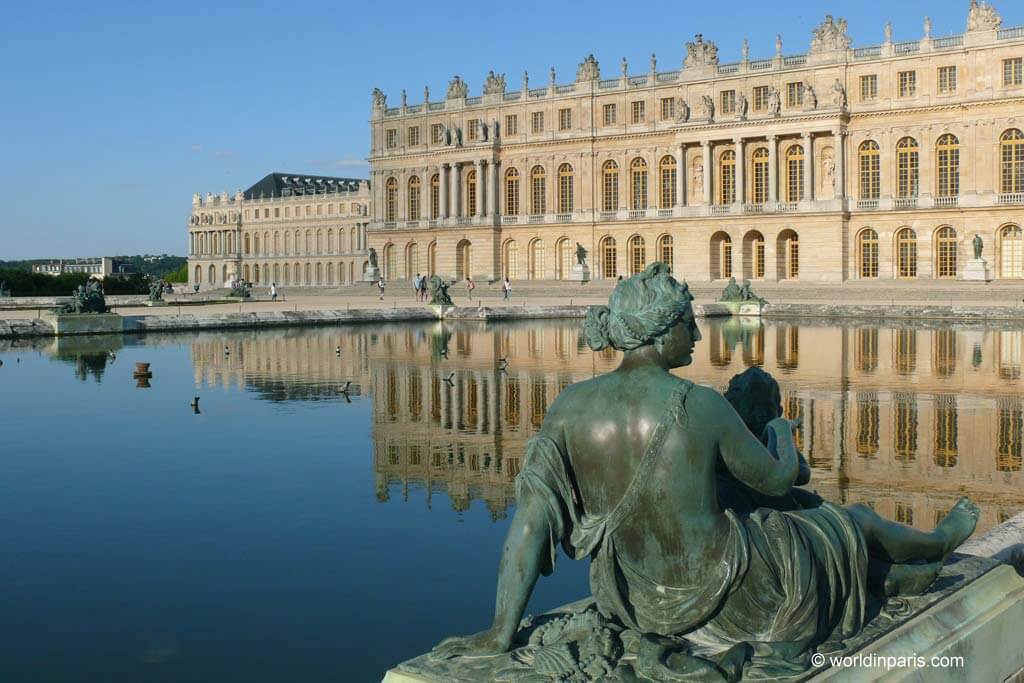A visit to the Versailles Estate is much more than the château. Wanted by King Louis XIV to move the court away from Paris – and better control it through a strict etiquette around him –, the Palace of Versailles is surrounded by beautiful gardens adorned with spectacular fountains and other buildings. Covering a surface of 800Ha, the Versailles Estate is divided into different areas
- Palace of Versailles
- Trianon Palaces – intimate palaces commissioned by King Louis XV for his family
- Queen’s Hamlet
- Versailles Gardens – known also as Petit Parc
- The Grand Canal
- Park – known also as Grand Parc
TIP: You can move through the different parts of Versailles by bike, except in the Petit Parc, where you can only walk or use the electric cars available for rent at the water parterres.
The Queen’s Hamlet – or Hameau de la Reine in French – is an artificial village inspired by 18th century Norman villages. The Hameau de la Reine was Marie-Antoinette’s happy place, where the Queen of France liked to come to get away from the constraints of court life.
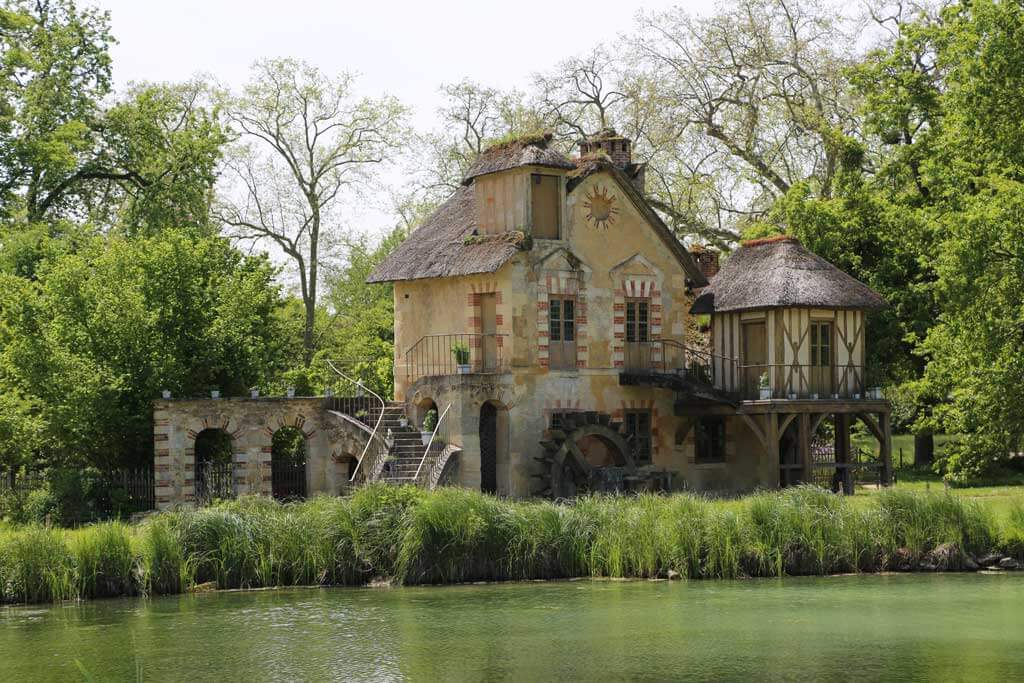
About Marie-Antoinette
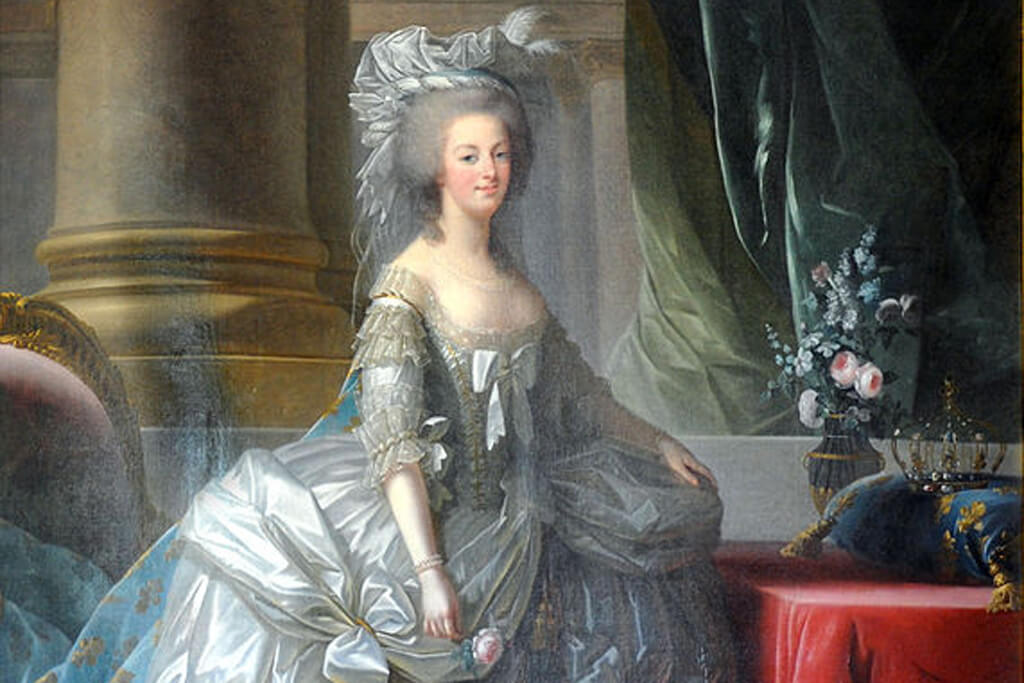
Marie-Antoinette (1755 -1793) was King Louis XVI’s wife and Queen of France from 1774 until the French Revolution. Marie-Antoinette is a fascinating historical character whose fame goes beyond her famous quote ‘Let them Eat Cake’ or the incredible affair of the diamond necklace. The proof is that there are many movies about Marie-Antoinette, inspired in different periods of her life.
History of the Queen’s Hamlet
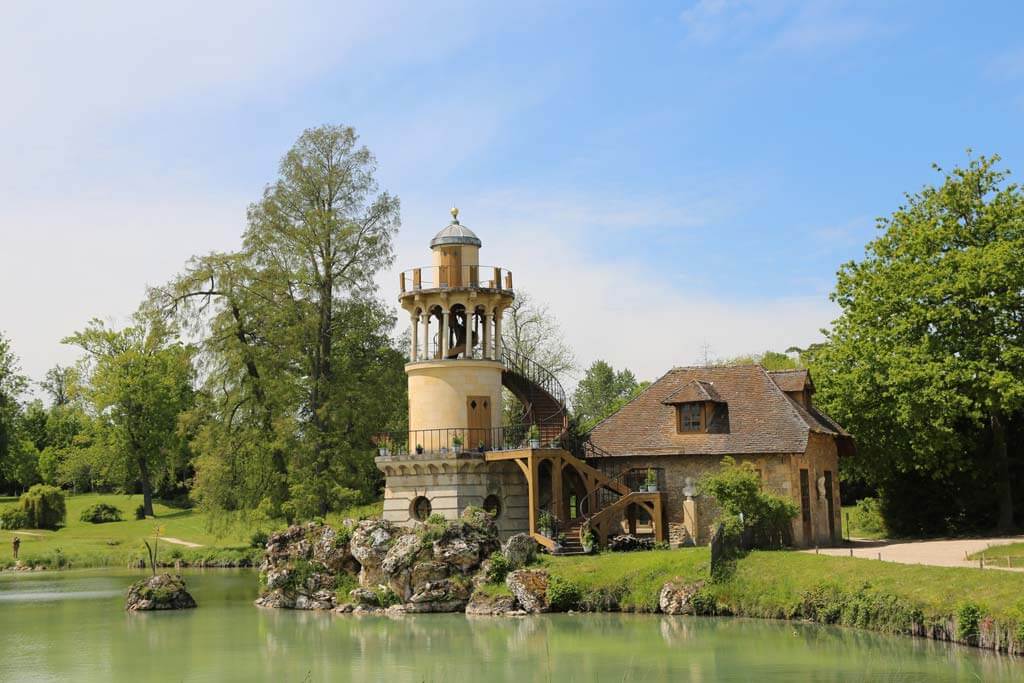
In 1783 Marie-Antoinette commissioned a little hamlet. It was located, a few minutes’ walk from the Petit Trianon, where she liked to stay away with her friends, far from the court.
This village, which at the time included a dozen buildings and cottages with thatched roofs, was inspired by 18th century Norman farms and perhaps by the paintings of Hubert Robert. The Queen called on her favorite architect, Richard Mique, who completed the hamlet in 1786.
The idea of advocating a return to nature was common at the end of the 18th century. Marie-Antoinette saw such hamlets inspired by country life among her brothers-in-law. There is also a similar hamlet in the gardens of Château de Chantilly, not far from Versailles.
The hamlet was partly designed to educate royal children, so it was a bit of an educational and ecological farm ahead of its time.
The hamlet was (and still is) a real farm, which partly supplied the castle. There was a farm with fields, a vegetable garden, pigs, sheep, chickens, cows breeding … there was also a preparation dairy and a cleaning dairy, a barn, a mill, a dovecote, and even a fishery located by the lake. When the lake was filled in, hundreds of carps and pikes were introduced to guarantee a sufficient production of fish to eat in Versailles.
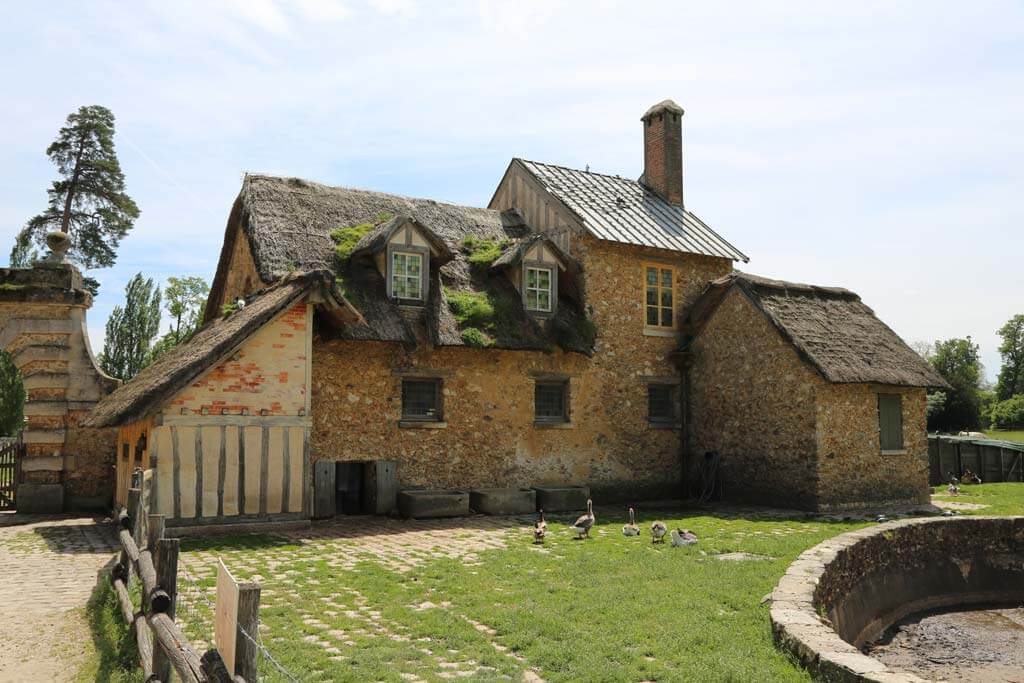
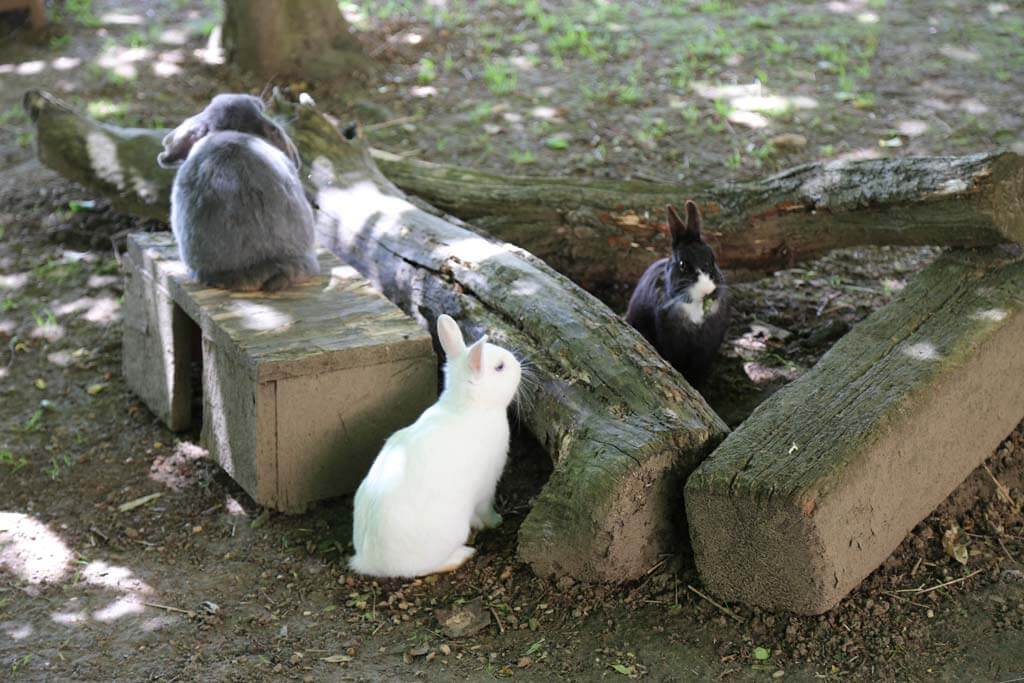
During the French Revolution, Marie Antoinette’s village was abandoned and partly destroyed. It was Napoleon I who launched the first restoration in 1810. Indeed, when he married the Empress Marie-Louise – who was none other than Marie-Antoinette’s niece –, he chose to offer his young wife the Hameau de la Reine, giving a second life to this village so dear to Marie-Antoinette. Unfortunately, Marie-Louise was not attached to it, and she visited very few times.
A Visit to the Hameau de la Reine in Versailles
The Hameau de la Reine is located inside the Versailles Estate. It’s a 15-minute walk from the Apollo Fountain. There’s a special ticket to visit Queen’s Hamlet and the Trianons, but if you want to visit the Chateau de Versailles too, then opt for the Versailles full access ticket, which includes everything and saves you money.
Plan Your Trip to Versailles
The Queen’s Hamlet and the Trianons open at noon and in general they don’t see the crowds. It’s a lovely visit!
The Hameau de la Reine in Versailles consists of a dozen little houses that revolve around an artificial lake dedicated to fishing.
The rustic appearance of the buildings gives this ensemble a remarkable realism, which is, however, misleading. Indeed, the buildings are simple in their exterior appearance but richly furnished and decorated inside.
DID YOU KNOW? Walt Disney came to visit the Queen’s Hamlet. It is said that the Hameau de la Reine inspired him for the thatched-roof house of the seven dwarfs that host Snow White. You can see similar constructions in Fairyland, in Disneyland Paris.
The Hameau de la Reine in Versailles was conceived as an ‘exploded’ castle, with the Maison de la Reine (Marie-Antoinette’s house) as the central place.
The house is made up of two separate buildings, connected by a wooden gallery decorated with the Queen’s initials: an intertwined M and A. In the first building, there is a dining room and a saloon upstairs. In the saloon, the Queen used to host intimate concerts for her guests. In the other building, there’s a bedroom, a billiard room, and the boudoir.
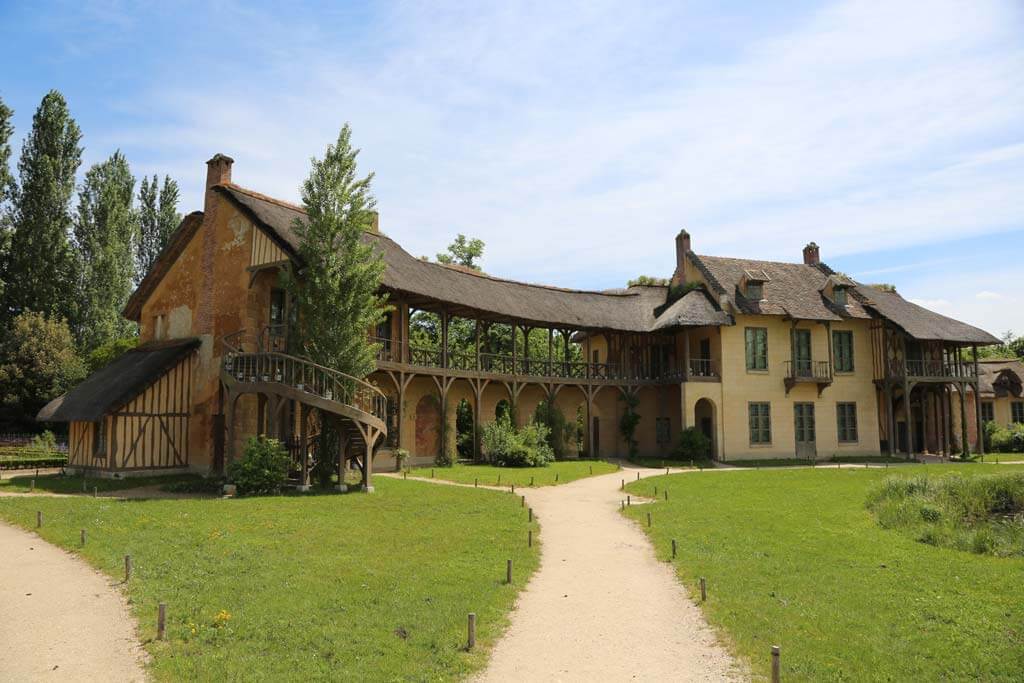
The other constructions in the hamlet are the warmer (to warm the dishes prepared in the Petit Trianon), the guard’s house, and the Tour Malborough at the foot of the lake. Beyond the lake, we find more functional buildings like the farm, the dairy, the fishery, and a mill.
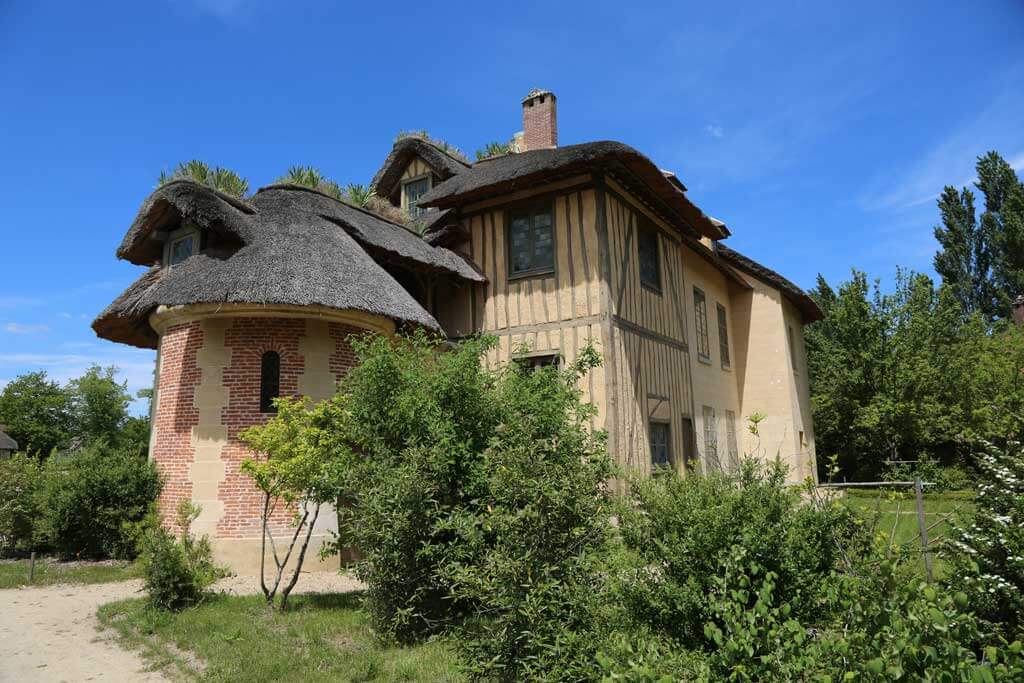
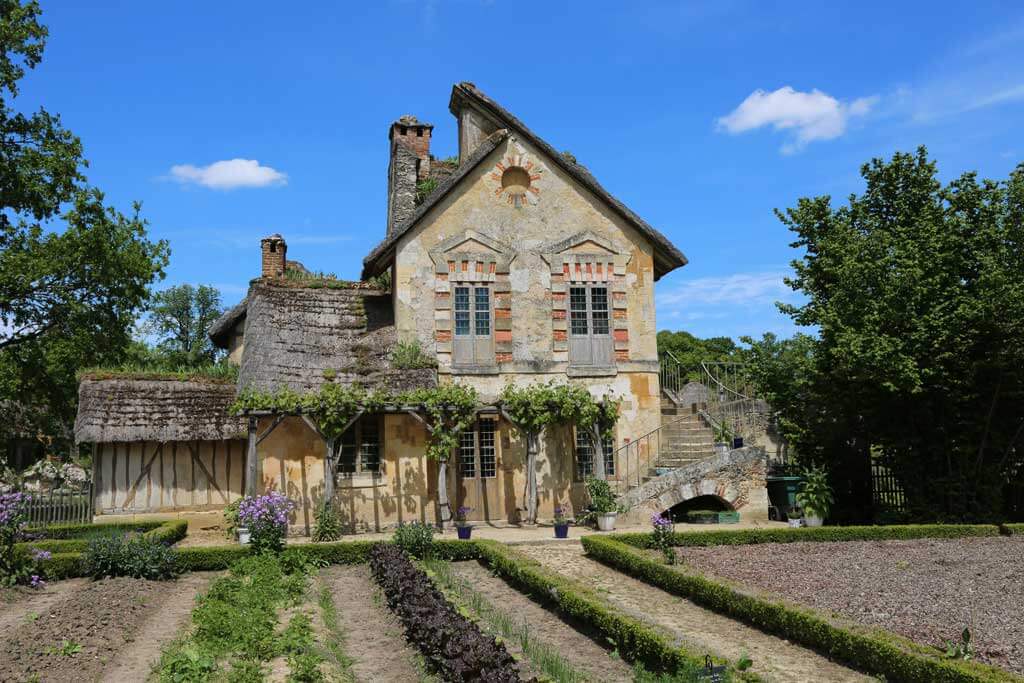
It is possible to visit certain buildings inside with a guided tour in French. The tour starts from the Petit Trianon, and it takes 1 hr 30 min. You can book your tour here.
When I visited the Hameau de la Reine, there were no guided visits available. This gives me a good excuse to go back to Versailles!

